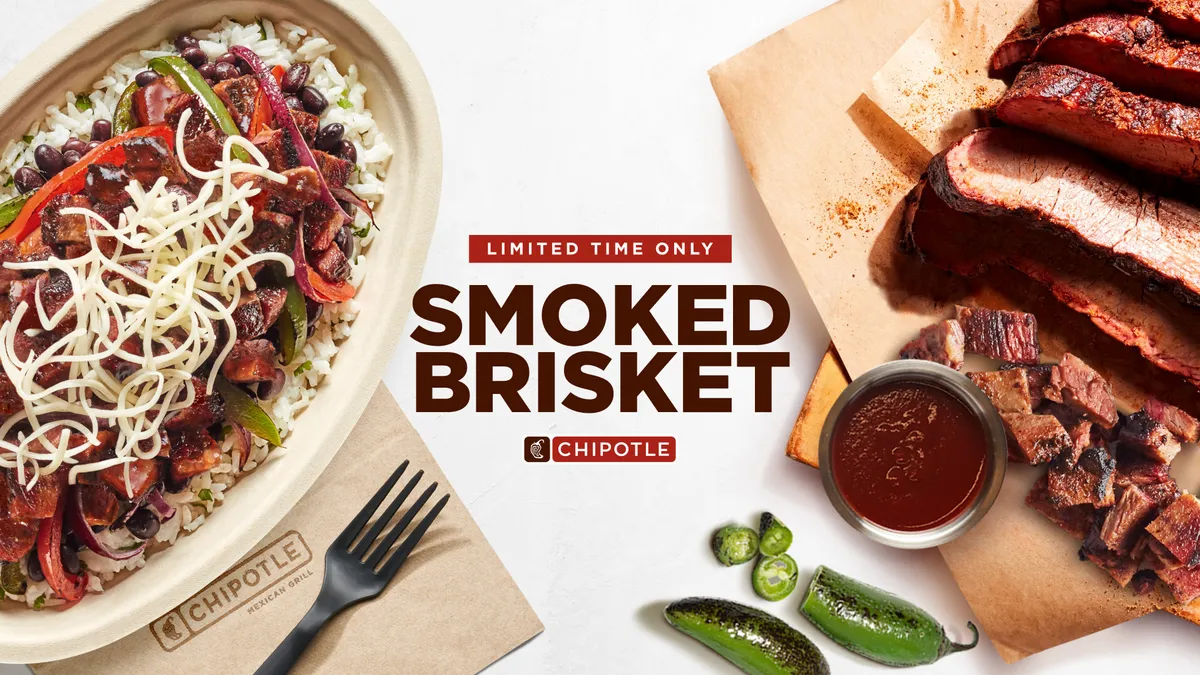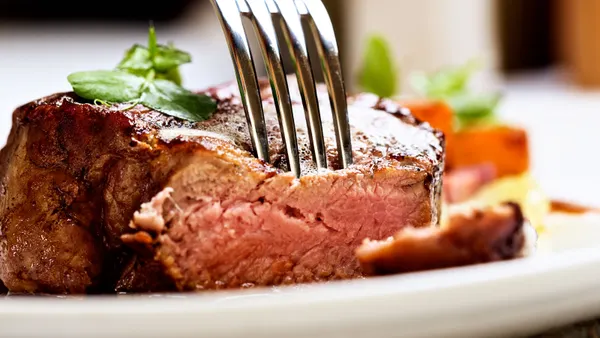Chipotle brought smoked brisket back to its menu earlier this fall for a limited-time promotion, an effort for which the company’s supply chain played a critical role.
Early returns on the promotion, expected to last through Q4, have been “fantastic,” CEO Scott Boatwright said on an Oct. 29 earnings call, highlighting how the dish is “driving incremental transactions and spend.”
The fast-casual restaurant chain first introduced smoked brisket as a promotional menu item in 2021 and has spent the better part of the last three years planning for its return, particularly on the supply chain side.
“We've been working on this for about a little bit over two years, almost two and a half years, to make this happen,” said VP and Head of Supply Chain Carlos Londono.
Each year, Chipotle aims to roll out two promotional menu items, according to Londono. These efforts are initiated through a collaboration between the company’s supply chain, culinary, food safety and quality and marketing teams. Bringing back smoked brisket was no different, with Boatwright calling it “a huge cross-muscle effort” on the Q3 earnings call.
The smoked brisket promotion begins with beef sourcing. Chipotle regularly works with suppliers in Australia, New Zealand, Uruguay, Canada and the U.S. to provide beef for its restaurants, but it required an additional 22 million pounds of meat to support the smoked brisket program this year.
On top of that, because brisket requires such a unique cut, only about 1% of the meat from each cow can provide what’s needed for the dish, Londono said.
To avoid paying astronomical prices for such a large influx of beef, Chipotle locked in contracts with suppliers for most of its projected volume 18 to 24 months before the promotion began, Londono said. The company then relies on some short-term buys to address more immediate needs.
There is another layer of complexity, however: Chipotle’s strict responsible sourcing policy. According to the company’s supplier code of conduct, animals must be housed humanely, fed vegetarian diets and not administered antibiotics or growth hormones.
“We work very closely with our suppliers, with our supply base, to make sure that all of those standards are very closely met,” Londono said. “And then we also have a team of people that will go and monitor and check, for example, for antibiotics and check for a variety of things.”
Chipotle’s smoked brisket recipe also demands a unique blend of spices, including smoked serrano chili peppers and chipotle chili peppers, adding further sourcing challenges for its supply chain team. Like with the beef, the company also contracts the specific spices it uses to make its smoked brisket 18 to 24 months in advance, particularly since such ingredients are not always held in-stock for short-term refills, Londono said
“We have to go and source different ingredients based on how that recipe changes,” he said. “And so it's not just the beef. The ingredients in the sauce or the topical seasonings are also very critical, and they require a lot of effort.”
As it continues to execute on its smoked brisket promotion, Chipotle is already testing its next limited-time menu item: honey chicken, a recipe that incorporates adobo, Mexican spices and honey. To effectively execute any of its promotional menu items, whether returning favorites or new creations, Londono says the key is leveraging internal and external partnerships.
“Promotions have to be easy to execute, so they cannot be something very, very complicated for the restaurant,” Londono said. “They have to be easy, but at the same time, they have to meet all the quality and the standards of Chipotle.”











